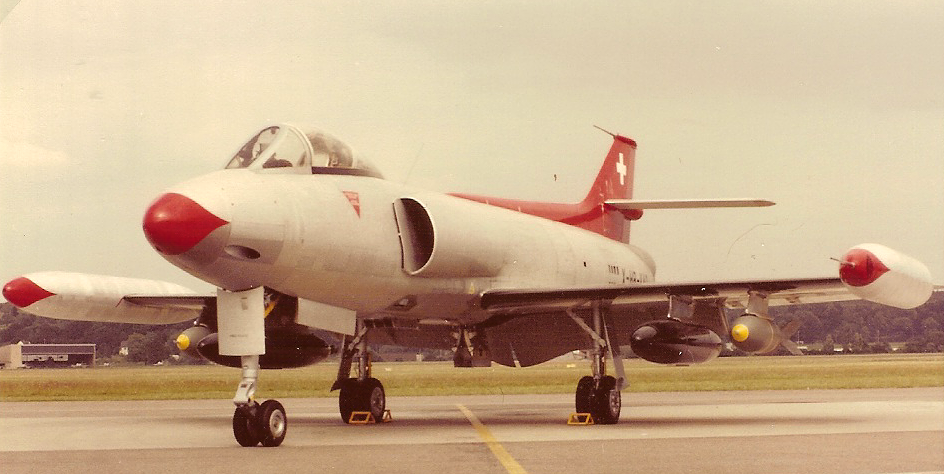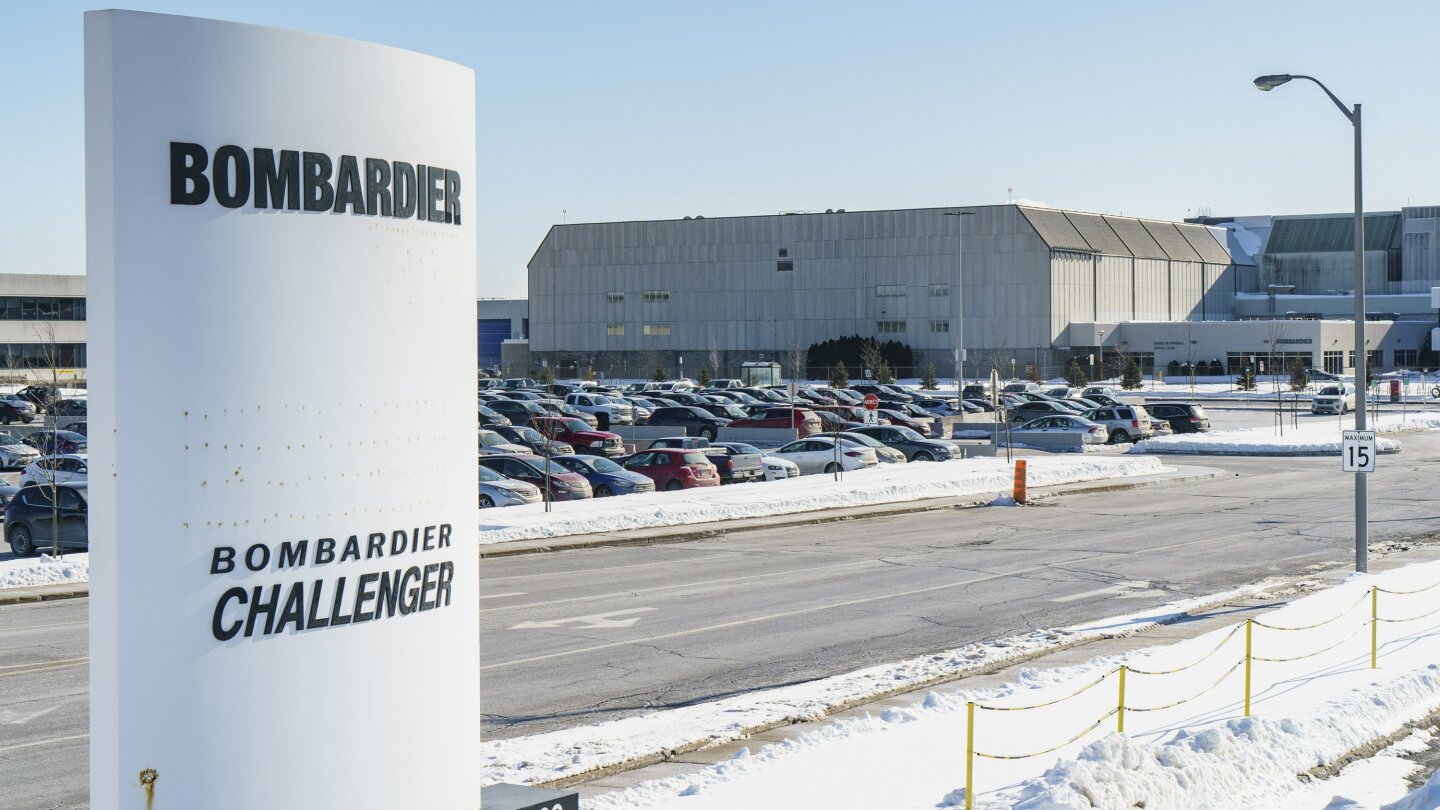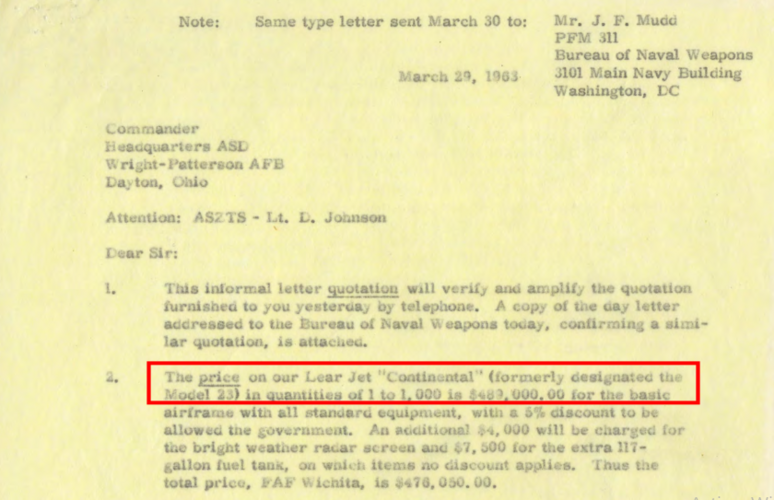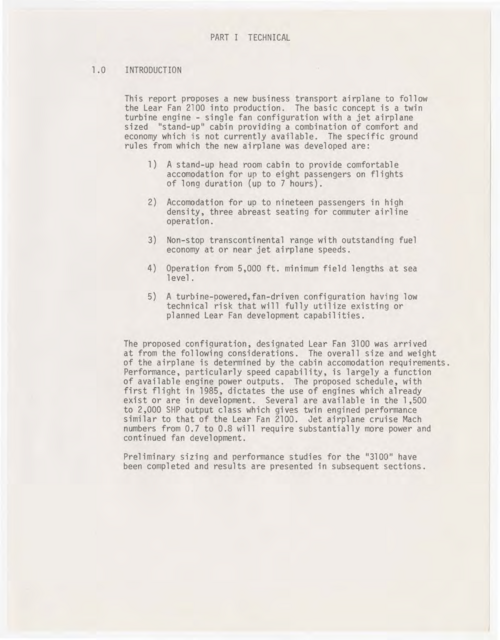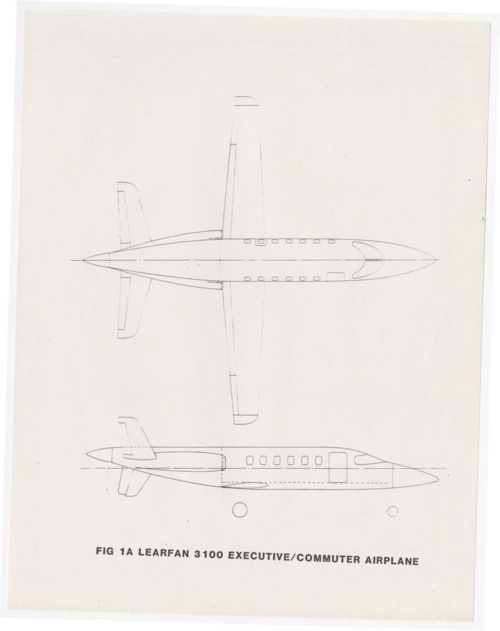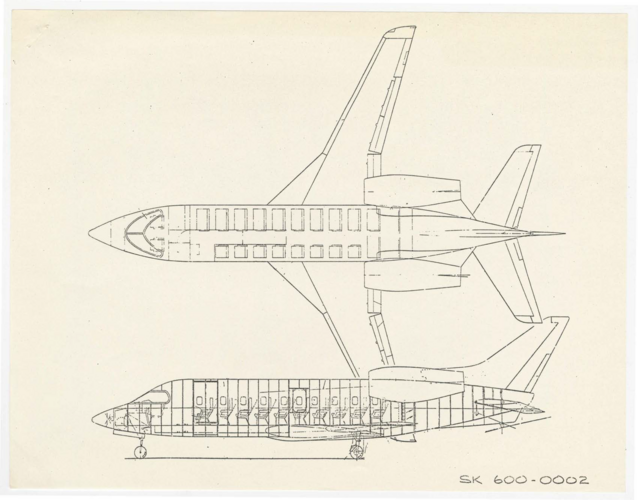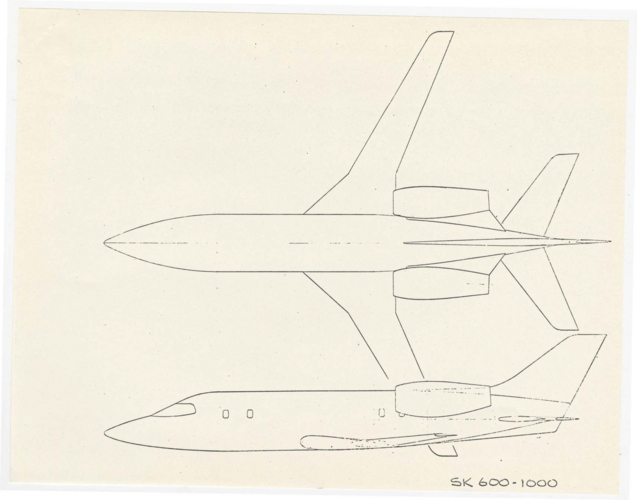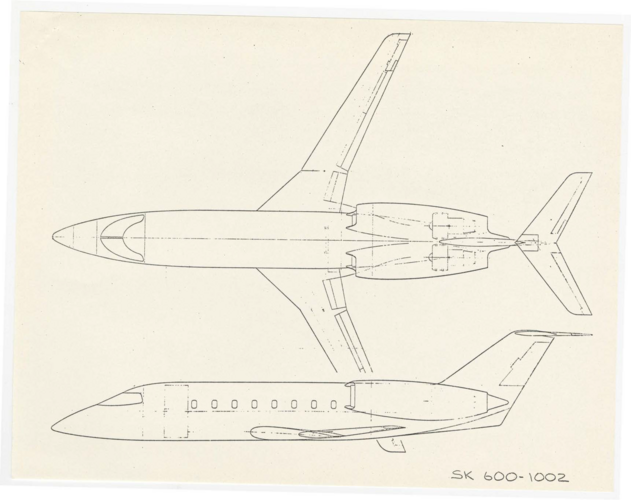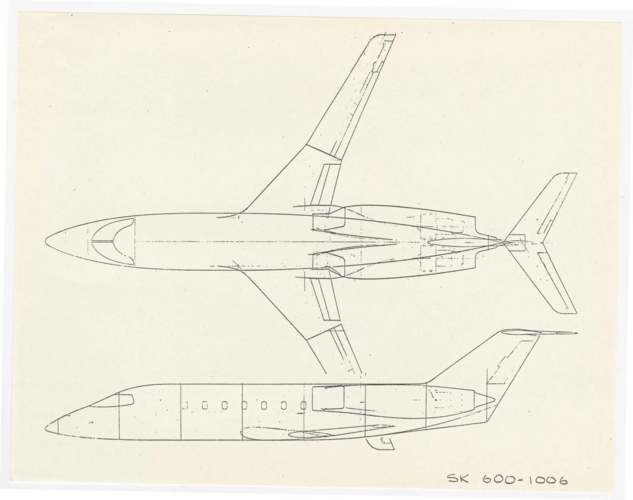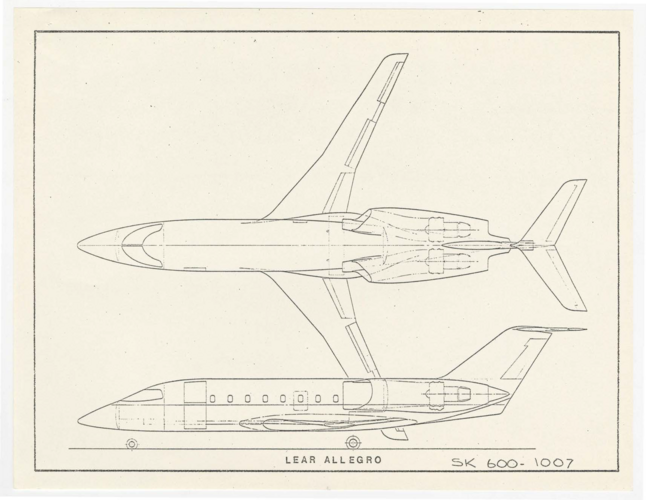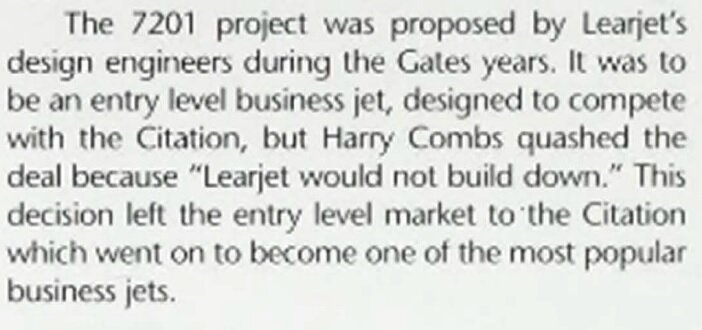- Joined
- 25 July 2007
- Messages
- 4,299
- Reaction score
- 4,196
Other Lear Aircraft Designations
_____________________________________________________
Lear Incorporated
Bill Lear Sr.'s first foray into commercial airframes was the Learstar programme to improve Lockheed 18 Lodestars (hence the Learstar name) as corporate transports. This work was initially done through the Aircraft Service Division of Lear Incorporated. That division later became Learcraft Conversions Inc. which was responsible for conversion work and marketing. In 1957, Learcraft Conversions became Pac Aero Engineering Corp.
Through a series of STCs, 6-odd Lockheed 18 airframes were cleaned-up aerodynamically with new nacelles, modified outer wings, nose and tail fairings, etc. Although not truly Lear aircraft, I include the Learstar Mark numbers as designations for completeness.
- Learstar Mk 1 : 2 x 1,425 hp Wright R-1820-76A, span 19.96 m
- Learstar Mk 1A: Learstar Mk 2 upgraded to Mk 1 standards
- Learstar Mk 1B: Learstar Mk 1 with RATO assist package
- Learstar Mk 2 : 2 x 1,325 hp Wright R-1820-56As, span 19.96 m
- Learstar III : FAA desig. for Learstar Mk 1A upgrade
-- http://1000aircraftphotos.com/Transports/258.htm
-- https://web.archive.org/web/20060209225506/http://www.burbanksbest.com/
_____________________________________________________
Gates Learjet Corporation
I have separated the Twinjet helicopter project from the main Learjet listings simply because the Model 112 designation bears no relationship to the the fixed-wing sequence.
Model 112 - (Project) 1969 Twinjet medium helicopter
- Model 112: Twin-engine helicopter, aka Gates Twinjet
- Model 112: 4-bladed main rotor (12.20 m diam), 2-bladed tail
- Model 112: 2 x 475 shp Garrett AIResearch TSE 231-P2400s*
-- * Mounted right-angles to the fuselage in high sponsons
-- * TSE 231-P2400 turboshaft derived from TPE 331 turbofan
-- https://www.secretprojects.co.uk/threads/lear-jet-projects-in-the-1960s.18024/#post-120924
_____________________________________________________
LearStar
The LearStar 600 was an independant 1974-1976 design. (I am unclear as to whether LearStar work was undertaken by LearAvia - see next entry.) The intended cruising speed for this bizjet was 600 mph - hench the designation.
Bill Lear, Sr. sold production rights for the LearStar 600 to Canadair Ltd late in 1976. After changes to the design, Canadair launched development of the CL-600 Challenger series.
LearStar 600 - (Project) 1974 'fresh sheet' medium bizjet
- LearStar 600: 'Wide-body bizjet' w/ supercritical wing
- LearStar 600: 1974, cruciform tailplane, span 14.02 m
-- c.1974: 2 x Garrett AiResearch TFE731 turbofans
- LearStar 600: 1975, 2+6-to-8 pax, cruciform tailplane
-- 2.23 m diameter fuselage, 5,000 miles range (6 pax)
- LearStar 600: July 1976, 2+14-to-30 pax+cabin attendant
-- July 1976: Longer fuselage, low anhedralled tailplane
-- 2 x 6,500 lbf Avco Lycoming ALF 502D, span 16.25 m
-- https://www.secretprojects.co.uk/attachments/learstar-600-july1976-3-view-jpg.84418/
- LearStar 600: Oct 1976, 2 + 10-to-11, (commuter) 30 pax
-- Oct 1976: Shorter fuselage, low-mounted flat tailplane
-- 2 x 7,500 lbf Avco Lycoming ALF 502-2L, span 18.22 m
-- Oct 1976: Canadair increases fuselage diam. to 2.69 m
-- https://www.secretprojects.co.uk/attachments/learstar-600-october-1976-3-view-jpg.84426/
- Canadair CL-600 Challenger: March 1977 format
-- * T-tail (0.31 m higher), longer (20.85 m vs 19.22 m)
-- 2 x 6,700 lbf Avco Lycoming ALF-502H,** span 18.85 m
-- ** C-GCGR-X, pending availability of the ALF-502Ls [1]
-- https://www.secretprojects.co.uk/threads/learstar-600.8158/
_________________________________________
LearAvia Corporation
LearAvia (occassionaly given as Lear Avia) sprang out of late 1972 work on aircraft noise suppression. This work was aimed at Learjets with GE CJ 610-5/-6 turbojets. The LearAvia Suppressor System was tested on Bill Lear's own Model 25 (N695LJ) resulting in an STC in March 1974. Other work was on a LearAvia Helicopter Muffler (aimed at the Bell 47) and the LearAvia Superwing - a supercritical wing originally aimed at Learjets. [2]
Doubtless, the LearAvia Superwing concept fed into the designs of the LearStar (above) and the Lear designs which followed - the Allegro bizjet [3] and the pusher-propeller Lear Fan 2100.
Bill Lear Allegro - (Project) 10-seat business jet
- Allegro: Buried rear engines, T-tail empennage
-- (??) No other confirmed details
- Allegro: 2.74 m fuselage diameter (confirm?)
-- Allegro poss. unsuccessfully pitch to Canadair
Lear Fan 2100 - 1981 2+6 pusher-prop business a/c, x 3
- Lear Fan 2100: Composite constr., combined power
- Futura: (Project) 1977, inverted V-tail
-- 2 x Lycoming LTS101 turboshafts, combining shaft
-- https://www.secretprojects.co.uk/attachments/lear-fan-1-jpg.94989/
- Lear Fan 2100: (Project) 1978, revised Y-tail
-- Flush engines air intake revised to dorsal scoop
-- https://www.secretprojects.co.uk/attachments/xlear-fan-2100-3v-jpg.119384/
- Lear Fan 2100: Graphite/epoxy and Kevlar composites
- Lear Fan 2100: 2 x 650 shp P&WC PT6B-35Fs, span 11.99 m
-- Engines repositioned outboard into fuselage-side pods
-- Fuselage struct. weak and ext. shafts underdeveloped
- Lear Fan 2100: Further development abandoned in 1985
____________________________________________
[1] In his 2007 Canada Aviation Museum Aircraft monologue on the Challenger, Bill Upton implied that Canadair favoured the GE CF34 engine for the CL-600. However, use of ALF 502Ds was insisted upon by the launch customer - FedEx (which would later cancel its order for 25 CL-600s).
That story seems to be refuted in The History of North American Small Gas Turbine Aircraft Engines by Richard A. Leyes II and William A. Fleming (AIAA/Smithsonian Institution, 1999). On page 194, the GE CF34 and ALF 502 are seen in competition with Canadair choosing the latter (with Bill Lear's agreement). FedEx did indeed specify the ALF 502 but it was doubts about GE's ability to match the CL-600's production schedule which decided the engine choice.
[2] Source: A submission by LearAvia Executive Vice-President Kenneth C. Krammer to the US Senate committee on Aircraft Noise Control Programs, 16 May 1974, pp 112-114.
[3] The NASA Ames biography for William F. Ballhaus Jr. mentions that the Lear Allegro was designed using computer code created by Ballhaus and Ron Bailey (so too was HiMat and the Northrop B-2 bomber).[/B]
_____________________________________________________
Lear Incorporated
Bill Lear Sr.'s first foray into commercial airframes was the Learstar programme to improve Lockheed 18 Lodestars (hence the Learstar name) as corporate transports. This work was initially done through the Aircraft Service Division of Lear Incorporated. That division later became Learcraft Conversions Inc. which was responsible for conversion work and marketing. In 1957, Learcraft Conversions became Pac Aero Engineering Corp.
Through a series of STCs, 6-odd Lockheed 18 airframes were cleaned-up aerodynamically with new nacelles, modified outer wings, nose and tail fairings, etc. Although not truly Lear aircraft, I include the Learstar Mark numbers as designations for completeness.
- Learstar Mk 1 : 2 x 1,425 hp Wright R-1820-76A, span 19.96 m
- Learstar Mk 1A: Learstar Mk 2 upgraded to Mk 1 standards
- Learstar Mk 1B: Learstar Mk 1 with RATO assist package
- Learstar Mk 2 : 2 x 1,325 hp Wright R-1820-56As, span 19.96 m
- Learstar III : FAA desig. for Learstar Mk 1A upgrade
-- http://1000aircraftphotos.com/Transports/258.htm
-- https://web.archive.org/web/20060209225506/http://www.burbanksbest.com/
_____________________________________________________
Gates Learjet Corporation
I have separated the Twinjet helicopter project from the main Learjet listings simply because the Model 112 designation bears no relationship to the the fixed-wing sequence.
Model 112 - (Project) 1969 Twinjet medium helicopter
- Model 112: Twin-engine helicopter, aka Gates Twinjet
- Model 112: 4-bladed main rotor (12.20 m diam), 2-bladed tail
- Model 112: 2 x 475 shp Garrett AIResearch TSE 231-P2400s*
-- * Mounted right-angles to the fuselage in high sponsons
-- * TSE 231-P2400 turboshaft derived from TPE 331 turbofan
-- https://www.secretprojects.co.uk/threads/lear-jet-projects-in-the-1960s.18024/#post-120924
_____________________________________________________
LearStar
The LearStar 600 was an independant 1974-1976 design. (I am unclear as to whether LearStar work was undertaken by LearAvia - see next entry.) The intended cruising speed for this bizjet was 600 mph - hench the designation.
Bill Lear, Sr. sold production rights for the LearStar 600 to Canadair Ltd late in 1976. After changes to the design, Canadair launched development of the CL-600 Challenger series.
LearStar 600 - (Project) 1974 'fresh sheet' medium bizjet
- LearStar 600: 'Wide-body bizjet' w/ supercritical wing
- LearStar 600: 1974, cruciform tailplane, span 14.02 m
-- c.1974: 2 x Garrett AiResearch TFE731 turbofans
- LearStar 600: 1975, 2+6-to-8 pax, cruciform tailplane
-- 2.23 m diameter fuselage, 5,000 miles range (6 pax)
- LearStar 600: July 1976, 2+14-to-30 pax+cabin attendant
-- July 1976: Longer fuselage, low anhedralled tailplane
-- 2 x 6,500 lbf Avco Lycoming ALF 502D, span 16.25 m
-- https://www.secretprojects.co.uk/attachments/learstar-600-july1976-3-view-jpg.84418/
- LearStar 600: Oct 1976, 2 + 10-to-11, (commuter) 30 pax
-- Oct 1976: Shorter fuselage, low-mounted flat tailplane
-- 2 x 7,500 lbf Avco Lycoming ALF 502-2L, span 18.22 m
-- Oct 1976: Canadair increases fuselage diam. to 2.69 m
-- https://www.secretprojects.co.uk/attachments/learstar-600-october-1976-3-view-jpg.84426/
- Canadair CL-600 Challenger: March 1977 format
-- * T-tail (0.31 m higher), longer (20.85 m vs 19.22 m)
-- 2 x 6,700 lbf Avco Lycoming ALF-502H,** span 18.85 m
-- ** C-GCGR-X, pending availability of the ALF-502Ls [1]
-- https://www.secretprojects.co.uk/threads/learstar-600.8158/
_________________________________________
LearAvia Corporation
LearAvia (occassionaly given as Lear Avia) sprang out of late 1972 work on aircraft noise suppression. This work was aimed at Learjets with GE CJ 610-5/-6 turbojets. The LearAvia Suppressor System was tested on Bill Lear's own Model 25 (N695LJ) resulting in an STC in March 1974. Other work was on a LearAvia Helicopter Muffler (aimed at the Bell 47) and the LearAvia Superwing - a supercritical wing originally aimed at Learjets. [2]
Doubtless, the LearAvia Superwing concept fed into the designs of the LearStar (above) and the Lear designs which followed - the Allegro bizjet [3] and the pusher-propeller Lear Fan 2100.
Bill Lear Allegro - (Project) 10-seat business jet
- Allegro: Buried rear engines, T-tail empennage
-- (??) No other confirmed details
- Allegro: 2.74 m fuselage diameter (confirm?)
-- Allegro poss. unsuccessfully pitch to Canadair
Lear Fan 2100 - 1981 2+6 pusher-prop business a/c, x 3
- Lear Fan 2100: Composite constr., combined power
- Futura: (Project) 1977, inverted V-tail
-- 2 x Lycoming LTS101 turboshafts, combining shaft
-- https://www.secretprojects.co.uk/attachments/lear-fan-1-jpg.94989/
- Lear Fan 2100: (Project) 1978, revised Y-tail
-- Flush engines air intake revised to dorsal scoop
-- https://www.secretprojects.co.uk/attachments/xlear-fan-2100-3v-jpg.119384/
- Lear Fan 2100: Graphite/epoxy and Kevlar composites
- Lear Fan 2100: 2 x 650 shp P&WC PT6B-35Fs, span 11.99 m
-- Engines repositioned outboard into fuselage-side pods
-- Fuselage struct. weak and ext. shafts underdeveloped
- Lear Fan 2100: Further development abandoned in 1985
____________________________________________
[1] In his 2007 Canada Aviation Museum Aircraft monologue on the Challenger, Bill Upton implied that Canadair favoured the GE CF34 engine for the CL-600. However, use of ALF 502Ds was insisted upon by the launch customer - FedEx (which would later cancel its order for 25 CL-600s).
That story seems to be refuted in The History of North American Small Gas Turbine Aircraft Engines by Richard A. Leyes II and William A. Fleming (AIAA/Smithsonian Institution, 1999). On page 194, the GE CF34 and ALF 502 are seen in competition with Canadair choosing the latter (with Bill Lear's agreement). FedEx did indeed specify the ALF 502 but it was doubts about GE's ability to match the CL-600's production schedule which decided the engine choice.
[2] Source: A submission by LearAvia Executive Vice-President Kenneth C. Krammer to the US Senate committee on Aircraft Noise Control Programs, 16 May 1974, pp 112-114.
[3] The NASA Ames biography for William F. Ballhaus Jr. mentions that the Lear Allegro was designed using computer code created by Ballhaus and Ron Bailey (so too was HiMat and the Northrop B-2 bomber).[/B]

